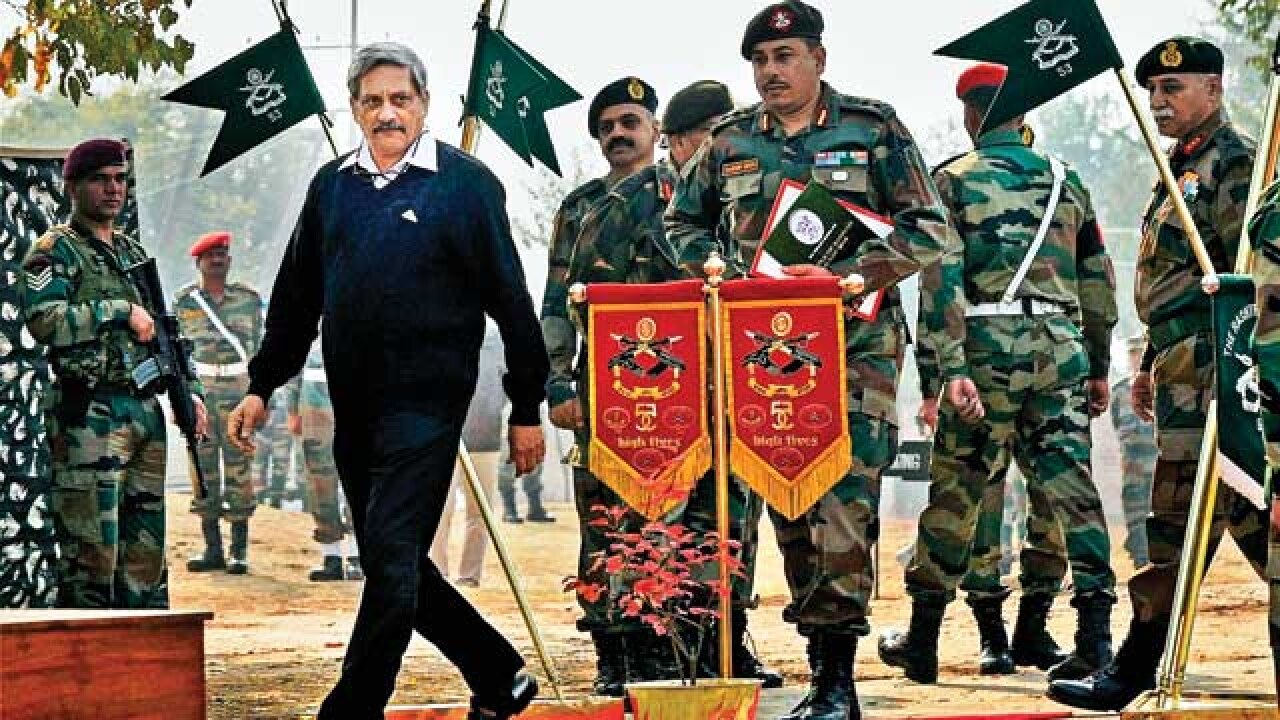
During his tenure as India’s Defence Minister, Manohar Parrikar came across as a sincere and perceptive leader and an accomplished manager. He gave a free hand to the Army to engage proactively on the LoC. He got the Prime Minister to approve surgical strikes across the LoC in September 2016 — operations that changed the paradigm. Parrikar worked closely with the leadership of the armed forces and the bureaucracy to put the stalled process of military modernisation back on the rails. And, he put his management skills and experience to good use to review policies and procedures for the efficient functioning of the Ministry of Defence (MoD) and the armed forces. Under Parrikar’s leadership, the NDA government began the long process of addressing the ‘critical hollowness’ plaguing defence preparedness — a term used by General VK Singh as the Army Chief in a letter written to the then Prime Minister. Besides major operational voids in the war establishment of the three Services, there were large-scale deficiencies in the holding of important items of equipment, ammunition and spares that had an adverse impact on combat readiness.
According to a CAG report, the army’s depots have stocks of some key varieties of ammunition — for example some tanks and artillery guns — for barely ten days of conflict. A cost of Rs 20,000 crore was estimated to replenish stocks and increase holdings to the required levels. Under Parrikar’s guidance, the MoD invoked the government’s emergency financial powers to sign contracts with Russian manufacturers to procure ammunition and spares worth Rs 5,800 crore for the Army and Rs 9,200 crore for the Air Force. Similar deals are being negotiated with French and Israeli companies. However, the serviceability state of war-fighting equipment still needs substantial improvement.
Modernisation of the armed forces had been stagnating during the UPA rule due to inadequacy of funds, rigid procurement procedures, frequent changes in qualitative requirements, the black-listing of several defence manufacturers, and bureaucratic red tape. Parrikar took it as a personal challenge to give a fillip to modernisation. He appointed a committee to review the Defence Procurement Procedure (DPP) and lost no time in studying and approving its recommendations. Several pragmatic amendments were approved by the Defence Minister and the DPP 2016 was issued in April that year. This included an emphasis on ‘Make in India’, raising FDI in defence to 49 per cent and tweaking of the policy on offsets.
Consequently, weapons and equipment purchases worth over Rs 1,50,000 crore have been accorded AON (acceptance of necessity) approval by the Defence Acquisition Council (DAC). Contracts have been signed for acquisitions worth approximately Rs 90,000 crore without a scam. However, it will take three to five years before deliveries begin.
On the negative side, the defence budget for FY 2017-18 dipped to 1.62 per cent of the country’s GDP — the lowest level since the disastrous 1962 border war with China. It is grossly inadequate to build the defence capabilities required to meet future threats and challenges and discharge India’s growing responsibilities as a regional power. A portion of the budgetary allocations on the capital account for the modernisation of the armed forces still continues to be surrendered unspent.
The 12th Defence Plan ending on March 31, 2017, was not accorded formal approval by the Cabinet Committee on Security (CCS). The CCS has also not formally approved the tri-service long-term integrated perspective plan (LTIPP 2007-22). Parrikar was widely expected to initiate long-pending structural reforms to improve national security decision-making and synergise combat capabilities, including the appointment of a Chief of Defence Staff (CDS) and new tri-service commands, but was unable to do so.
The recommendations of the Seventh Pay Commission have still not been implemented for the armed forces. The agitation for OROP launched by the Veterans was allowed to linger on for an embarrassingly long period of time, with many anomalies remaining unresolved. Overall, the achievements of Manohar Parrikar as India’s Defence Minister far outweigh the disappointments. He deserves compliments for his untiring efforts to enhance India’s combat capabilities.
The author is Distinguished Fellow, Institute for Defence Studies and Analyses (IDSA), New Delhi.